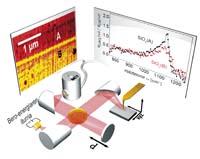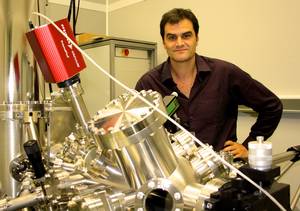Structure and evolution of the titina, indicator of the size of animals of the past
2017/07/04 Elhuyar Zientzia Iturria: Elhuyar aldizkaria

The researcher of the Nanobiomechanics group of NanoGUNE, in a research led by Raúl Pérez-Jiménez, has constructed, from the genetic sequences of the current animal titine protein, a phylogenetic tree of tetrapods (that is, of all four-legged animals: mammals, sauropsids, reptiles and amphibians), as well as of their common ancestors.
Once these genetic sequences have been obtained, they have synthesized a part of the old proteins, analyzing their mechanical and chemical properties. This has allowed them to find a relationship between the properties of the protein and the size of the animals and ratify it in the fossil record of each era.
Pérez-Jiménez states that “the most interesting thing is that we have seen the mechanochemical evolution of the protein, that is, how the titine has changed throughout evolution”. He also highlighted the methodology used in reconstruction and has advanced that the results obtained allow further research. “We would like, for example, to check if this correlation with size is fulfilled in all groups of animals,” he says.
NanoGUNE and CNIC have jointly conducted the research and have published their results and conclusions in the scientific journal Nature Structural & Molecular Biology.

Gai honi buruzko eduki gehiago
Elhuyarrek garatutako teknologia





